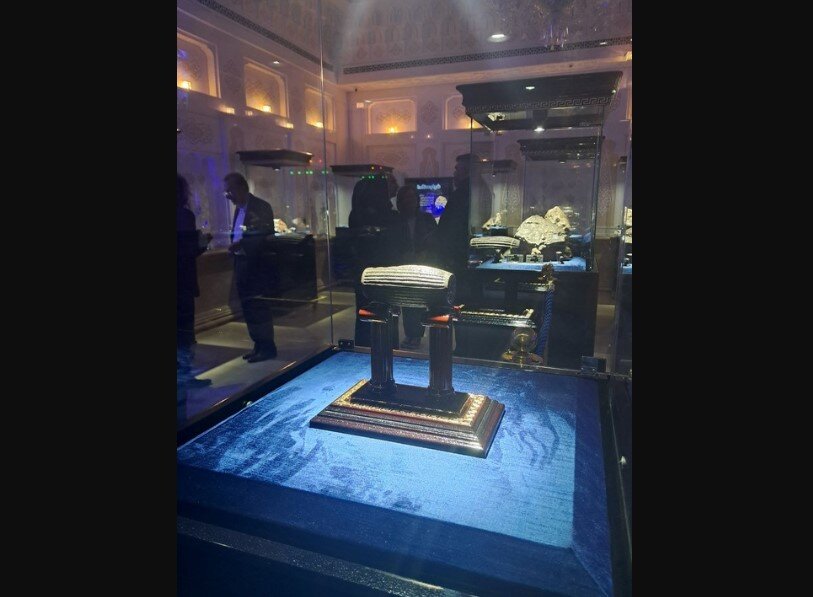Iran’s second meteorite museum opens in Tehran

TEHRAN- Iran’s second meteorite museum was inaugurated at Tehran’s Iran Mall on Monday, following over six years since the inception of the first branch at Azadi Tower.
The Museum of Meteorites of Iran and the World was inaugurated in the presence of university professors and media representatives, marking a significant milestone in promoting knowledge about meteorites in Iran, CHTN reported on Tuesday.
During the opening ceremony, Hojjat Kamali, known as the father of Iranian meteorites and the director of the Iranian Meteorite Museum, highlighted the achievements that have led to this momentous occasion, stating, “Today, we successfully opened the second branch of the Meteorite Museum at Iran Mall, building on the legacy of the first branch at Azadi Tower.”
In the Iran Mall branch, visitors can marvel at over 10,000 meteorite specimens from both Iran and around the world, alongside exquisite pieces of meteorite jewelry. Kamali elaborated that the collection is a culmination of 20 years of dedicated research and collaboration with various institutions, including the Ural Federal University in Russia, the University of Florence in Italy, and several French universities.
The Azadi Tower branch, inaugurated in 2019, houses more than 1,200 meteorite samples, including Iran’s largest meteorite, the most beautiful celestial stone, and the oldest Iranian meteorite.
Kamali further revealed, “The extensive collection of the Iranian Meteorite Museum achieved global recognition in 2016. Despite lacking sufficient scientific resources and studies in celestial bodies and meteorites, Iran rose from the 122nd to the 2nd place globally—recording the most meteorites discovered by countries worldwide. Currently, this ranking has been adjusted to the 9th position.”
The museum director emphasized the complexity of distinguishing celestial stones from earthly ones, saying, “When we enter nature, we are confronted with billions of rocks and thousands of different types of terrestrial stones. It is not an exaggeration to claim that differentiating meteorites from earth stones is a challenging task, achievable only through extensive study. The separation of these stones from terrestrial materials requires thorough research and cannot be done without it.”
As a discoverer and collector of meteorites for the museum, Kamali noted a unique feature of the Iran Mall branch: “In contrast to the Azadi branch, this museum includes a section dedicated to selling meteorites for enthusiasts.”
Additionally, the museum features a significant historical artifact—the Cyrus Cylinder inscribed in cuneiform on a meteorite. Kamali explained, “This cylinder is designed on a piece of meteorite, with a beautiful inscription reflecting human rights. We also have a three-kilogram meteorite that we managed to refine to a weight of one kilo and 500 grams. During this process, both sides of the cylinder were adorned with blue lotus flowers, creating a celestial message from this ancient artifact.”
Beyond the historic cylinder, the museum displays remarkable meteorites, including the world’s most beautiful pallasite meteorite, Iran’s first Martian meteorite, the first lunar meteorite, and the largest iron meteorite in Iran, along with countless varieties of meteorites.
SAB/
Leave a Comment